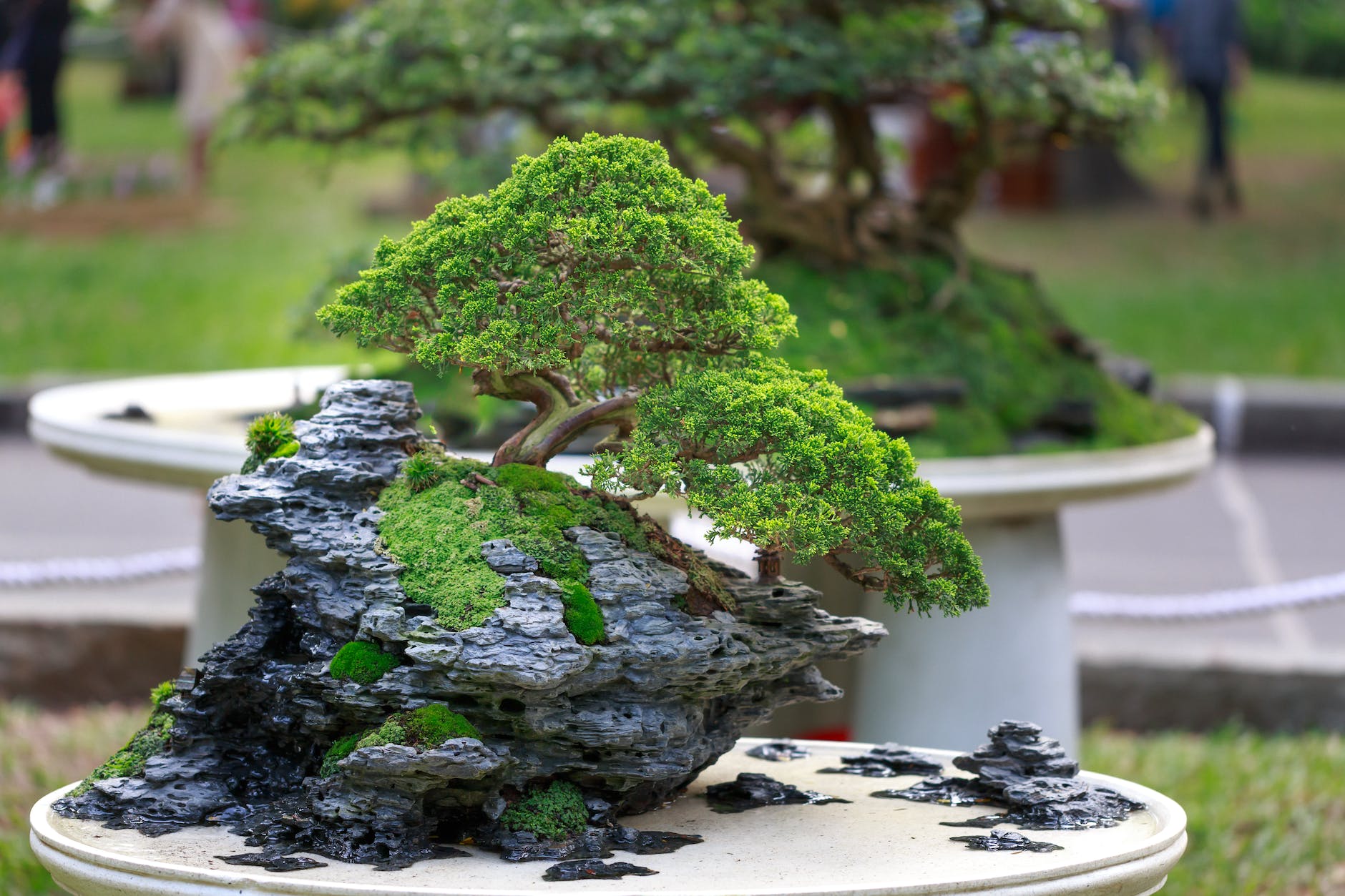Bonsai Tree Styles for Beginners: Achievable Looks for New Hobbyists
The structured forms and peaceful elegance of bonsai trees are alluring to newcomers. However, realizing the classical sloped, windswept, and cascading shapes typically seen can feel daunting for novices. Rather than forcing advanced techniques too soon, start by working towards basic styles that will build foundational skills without frustration. Through practice shaping young starter trees using straightforward wiring and pruning methods, beginners can successfully create pleasing informal upright, slanting, raft, and twin trunk styles. Here are directions for cultivating four classic bonsai forms that provide gratifying results for early hobbyists.
#1 Informal Upright Style
The informal upright is the most common beginner design. It features a noticeably vertical, slightly off-center trunk with asymmetrical branching.
Selecting a Suitable Tree
Young saplings with some movement in the trunk are ideal starter material. Look for a visible back branch below the apex.
Visualizing the Design
Picture a pyramidal shape with the apex offset towards one side. Branches alternately zigzag upwards.
Initial Styling
Allow the apex leader to grow unchecked to extend the height. Choose a front facing and directional flow.
Structural Pruning
Retain branches emerging from the back and sides of the trunk. Prune any crossing the front face.
Wiring Branches
Wire secondary branches to angle outwards in alternating directions up the trunk line.
Leaf Pruning
Trim select leaves to create visible spaces through the foliage and a miniaturized look.
This straightforward style teaches key techniques without contorting trees too unnaturally early on.
#2 Slanting or Shakan Style
The slanting style visually mimics larger trees leaning away from harsh elements like wind and snow.
Finding the Right Material
Look for stock with the trunk already showing some movement or bend near the base to build upon.
Envisioning a Flow
Visualize a trunk that arcs cleanly to one side from the soil line upwards at an elegant 40-60 degree angle.
Wire the Trunk
Use thick guy wires attached above and below the turn to set the entire trunk into a fixed slanted pose.
Foliage Density
Allow foliage to remain denser on the leaning side to balance the weight visually. Prune the opposite side.
Cascade Extension
Letting the apex eventually extend into a partial cascade completes the natural effect.
The graceful diagonal line this style creates is easily achieved from both wiring and selective pruning.
#3 Raft or Hokidachi Style
The raft, also called driftwood, style employs a dramatic horizontal trunk with exposed roots that evokes a fallen tree.
Finding Source Material
Look for stock with interesting roots emerging from one side of the trunk and low branching potential.
Positioning the Trunk and Roots
Secure the trunk parallel to the soil line with the visible surface roots on top using wires through drainage holes.
Visualizing Branch Placement
Imagine branches emerging upwards from the upper surface of the reclined trunk on alternate sides.
Refining the Structure
Prune any branches pointing downwards. Wire remaining shoots to train them upwards.
Accentuating Exposed Roots
Scrape away some top soil to further expose and clean the surface roots for emphasis.
The raft form creates the illusion of greater age and maturity by mimicking deadfall trees.
#4 Twin Trunk Style
As the name implies, the twin trunk style utilizes stock containing two closely aligned trunks arising from the same root base.
Selecting the Right Material
Look for young trees where dual leaders split very close to the soil line and rise vertically.
Deciding on a Flow
Choose a front face and visualize how the twin trunks will be positioned – spreading, crossing, curving, etc.
Wiring the Trunks
Bend and secure the twin trunks into pleasing mirrored shapes or flowing movements using heavy training wires.
Managing Growth
Allow the apex of the dominant trunk to extend while pruning back the secondary for subordination.
Completing the Image
Over time, grow each trunk thicker through diligent watering, feeding, and pinching back new shoots.
The mirrored symmetry of twinned trunks creates an instantly recognizable bonsai motif for beginners to achieve.
Advancing Beginner Skills Through These Foundational Styles
Starting with these four classic forms lays groundwork for greater possibilities later.
Learning Horticultural Basics
Keeping these beginner trees healthy and vigorous strengthens core cultivation abilities.
Mastering Initial Design Choices
Selecting fronts, visualizing flow, and determining basic shapes trains critical design thinking.
Practicing Structural Pruning and Wiring
These methods build familiarity with modifying branch architecture for desired forms.
Developing Patience and Observation
Seeing slow progress over months and years instills proper long-term bonsai dedication.
Gaining Confidence
Achieving early successes motivates enthusiasm to attempt more advanced techniques in due time.
Preparing Future Material
The starter trees shaped using beginner methods will become candidates for refinement into more intricate styles down the road.
Patience and dedication lead to bonsai mastery. But resist rushing into overly complex designs at first. Establish a creative foundation using styles naturally suited for green hobbyists that will pave the way for greater challenges and enjoyment.
